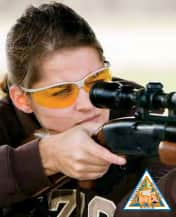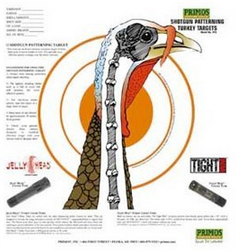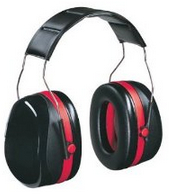Shooting Range Design and Operation
In Search of Whitetails 02.06.13

This weekend I took two of my grandfather’s guns to the August A. Busch shooting range operated by the Missouri Department of Conservation (MDC). Pickup trucks and cars crowded the gravel parking lot. It was a sunny but frigid Saturday afternoon, and the range was packed. Men and women, young and old, hunters and gun enthusiasts all were represented. They were sighting in their pistols, deer guns, and rifles; they were trap shooting and skeet shooting. It was an impressive display of firepower to say the least.
How to Design a Shooting Range
Most of my efforts in the past few years were geared toward bowhunting deer and turkey, so I admit I haven’t been to the range in some time. I was immediately reminded how tight of an operation the MDC runs here. The range is open every day (except holidays and some special events) and fully staffed. They offer just about everything that a bow or gun shooter might need.
Shotgun Ranges
 I started out at the shotgun patterning boards. There’s a gun rack and shooting bench, and a big signboard outlining the rules for that part of the range, notably:
I started out at the shotgun patterning boards. There’s a gun rack and shooting bench, and a big signboard outlining the rules for that part of the range, notably:
- You load one shell at a time
- You rack your shotgun before approaching the boards
- Only one shooter uses the patterning boards at a time
- Ear and eye protection are required
Distances from 20 to 40 yards are marked off, and three patterning boards are available. A big roll of brown paper is provided for targets, but next time I’m going to bring some of the Primos turkey shotgun targets for some realistic practice. I was the only person using the boards, so I took my time getting familiar with my grandfather’s 12 gauge, a Remington 1100 autoloader in pristine condition.
Nearby, there were two 16-yard American Singles Trap Fields and one American Skeet Field. Clay birds are provided, but you must provide your own firearm and ammunition, which is limited to shotguns 12 gauge or smaller and shell shot size of 7 or smaller. Both fields are operated by range staff and accommodate multiple shooters, which was good because participation was high.
Rifle and Handgun Range
 The feature attractions, unsurprisingly, were the shooting ranges. On one side were 10-point, 100-yard covered individual shooting booths with target lines at 25, 50, 75, and 100 yards. Single-action and semi-automatic rifles, black powder rifles, and shotguns with slugs are permitted. On the other side were 9-Point, 25 yard covered individual shooting booths with target lines at 7, 15, and 25 yards.
The feature attractions, unsurprisingly, were the shooting ranges. On one side were 10-point, 100-yard covered individual shooting booths with target lines at 25, 50, 75, and 100 yards. Single-action and semi-automatic rifles, black powder rifles, and shotguns with slugs are permitted. On the other side were 9-Point, 25 yard covered individual shooting booths with target lines at 7, 15, and 25 yards.
More than a dozen booths were active, and the variety of guns being used there was impressive. I’ll say this much: eye protection is required, but good ear protection is essential. Temporary earplugs like the ones I had weren’t enough. Next time I’ll bring a pair of 3M Peltor Earmuffs, which have a noise reduction rating of 30 dB.
I thought my grandfather’s .30-06 was loud, but it was nothing compared to some of the firepower being ranged in there. We’re talking ultra-modern rifles and something that I swear was from WWII and sounded like a cannon going off.
Operating the Shooting Range
An active and watchful shooting range staff ran the gun range as a very tight operation. Every 15 minutes was a scheduled cease fire, when shooters all followed a strict protocol.
- All weapons were unloaded, locked with actions open, and placed in the racks. They’re not to be touched again until the cease fire is ended.
- When this is done, each shooter steps out of his or her booth, puts a chain across the opening, and flips the metal booth flag from orange to green. No one re-enters or touches anything in a booth after this moment.
- Once all booths are clear and green, the line chief gives a sign of approval to the control booth, who announces that it’s safe to proceed downrange. Targets can be checked, moved, or re-papered. However, no one can enter or leave the range at this time.
- When everyone returns from downrange and sets their booth flag back to orange, an all-clear is given. At this point shooters can load and begin shooting, as well as enter or leave the range.
Of course, there are other rules concerning good muzzle control, safe shooting, etc. The staff in the control both are ever-vigilant; they can and will yell at you over the loudspeaker. The line chief is watchful, too, and available to answer questions or offer advice. I had him look at my Lyman All-American 4x scope after it suddenly went out of focus after two or three shots with the 30-06. All told, it was a very organized, very safe operation.
Archery Ranges
Though I didn’t bring my compound bow this time around, there are some great options for archery shooters as well:
- Field archery ranges. Six positions at 10 to 40 yards, including an 8 foot elevated platform to simulate shooting from a tree stand. 4-field walking trails with 14-shooting points on each. Target butts provided.
- 3D archery range. Use broadheads or field tips on special 3D targets set at different distances. Fun, realistic practice for bowhunting!
- Tree stand test pole. Basically a telephone pole where you can practice setting up and using your tree stand, without the distraction of 10,000 volts overhead.
Benefits of Shooting Ranges
There are many good reasons for conservation departments (or groups of hunters) to provide shooting ranges like this one. They help attract and train new generations of hunters and shooting enthusiasts. They emphasize safety. They provide a gathering place where like-minded citizens can meet one another. It’s the kind of place where you can go and see just how many other hunters and gun owners are out there… the kind of place that makes you think there’s hope for America.
Check out In Search of Whitetails for more hunting and shooting articles.

